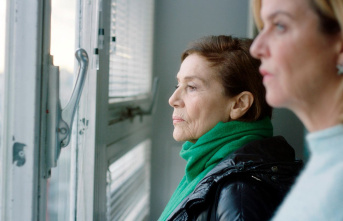Something is happening in the display case in Amsterdam's Anne Frank House, where one of the most famous diaries in the world is on display. "Lieve Kitty" (Dear Kitty) reads on one of the handwritten pages. Suddenly a red-haired girl gets out of the book and calls out: "Anne? Where are you all?"
In the animated film "Where is Anne Frank" by the Israeli director Ari Folman, Anne Frank's imaginary friend Kitty, who wrote about her in her diary, is the actual main character. Kitty comes to life and takes young viewers on her quest to find Anne. She follows Anne's footsteps, from the Secret Annex to her death in the Bergen-Belsen concentration camp.
The girl Anne is not idealized
Kitty only gradually realizes that the room in the Amsterdam Secret Annex, where Anne, her family and other persecuted Jews hid from the threat of deportation to the German death camps, has become part of a museum. While searching for Anne, Kitty meets youths who support refugees hiding from impending deportation. Kitty herself is wanted nationwide as the suspected thief of the famous diary. Only gradually does she realize that Anne is dead and world famous thanks to her diary.
Given the age group of nine or ten years and older for which the film was made, Folman decided against a realistic portrayal of conditions in Bergen-Belsen, for example. The German occupiers, for example, were portrayed by art director Lena Guberman as faceless, huge figures in black cloaks with helmets reminiscent of Darth Vader. In the scenes of the selection at Auschwitz, Folman used Greek mythology and the journey to the underworld to illustrate.
The film shows Anne with all her contradictions, not an idealized version of the girl who dreamed of becoming the youngest famous writer. "It's dangerous to idolize Anne too much," Folman told the German Press Agency. "We easily forget that she was a normal girl, a teenager. She could be hilarious, but she could also be mean. She had tremendous problems with her mother, like a lot of girls her age. She was jealous of her 'perfect' sister - and all of that is beautiful and human and also belongs in the film."
Finding a new language for Anne Frank's story
At the same time, the animated film carries the message of the thoughtful, political and committed Anne into the present. "Do everything you can to save even one child's life!" she exclaims in a scene reminiscent of Talmud wisdom: whoever saves one human life saves the whole world.
Folman hopes this message will resonate with young cinema audiences. "When children see this film and decide to become active themselves, whether for refugees or for the climate, then that is a great success for me."
Of course, Kitty's encounter with the refugees in contemporary Amsterdam does not mean equating it with the fate of European Jews in World War II, according to Folman. "You can't compare it at all. You have to realize that 1.5 million Jewish children were murdered during the Holocaust, who didn't even have the chance to be refugees. Nobody fought for them like Kitty in the film. That is a colossal difference."
For the Anne Frank Fund in Basel, which approached Folman with the project, it was a question of finding a new language, a good 75 years after the diary was first published, in order to tell the story for a new generation. In view of the increasing denial of the Holocaust, growing anti-Semitism and half-knowledge, it is important to draw lessons from the past. The film is not the only means: "Wo ist Anne Frank" was published as a graphic novel by the Frankfurt S. Fischer Verlag.
Wo ist Anne Frank, Belgien 2021, 104 Minuten, FSK ab 6, von Ari Folman.












